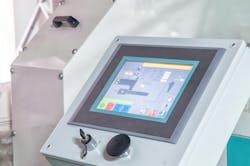Beyond the screen: How advanced industrial panel displays are changing equipment operations
Key highlights
- Industrial panel displays offer enhanced ruggedness (IP65/67, wide operating temperatures, shock/vibration resistance) and diverse connectivity (Ethernet, Wi-Fi, Fieldbus protocols) for reliable integration into demanding manufacturing environments.
- The incorporation of edge computing, AI and machine learning into these displays enables real-time data processing, predictive insights, and intelligent visualization directly at the machine, improving operational efficiency and safety.
- High-resolution displays, advanced touchscreens and emerging technologies like OLED, Micro-LED, and AR integration provide superior user interaction and adaptability, optimizing operator performance and streamlining workflows.
Industrial panel displays have undergone significant advancements in recent years, driven by the growing demand for better performance, durability and functionality. These innovations have not only improved user interaction but also enhanced efficiency, safety and adaptability across industrial environments.
Industrial panel displays feature higher resolutions, such as full HD (1920x1080) and 4K (3840x2160), providing crisp and clear visuals. High resolution is particularly beneficial for applications requiring detailed monitoring, such as precision manufacturing, control rooms and medical equipment. Enhanced clarity ensures that operators can detect anomalies or interpret complex data with ease, improving decision-making and reducing errors.
Touchscreen interfaces have become a standard in industrial panel displays, offering intuitive and user-friendly interaction.
- Projected capacitive touch offers multi-touch capability, high durability and excellent resistance to environmental contaminants such as dust, oil and moisture.
- Resistive touch screens are enhanced with improved durability and responsiveness for environments where gloves are commonly used.
These technologies ensure seamless operation even in harsh industrial conditions, improving productivity and user experience.
Industrial environments often expose equipment to extreme temperatures, vibrations, dust and moisture. The latest panel displays are built with rugged designs.
- IP-rated enclosures protect against dust and water, with ratings such as IP65 and IP67.
- Wide operating temperature range displays are capable of functioning between -30 °C to 85 °C.
- Shock and vibration resistance ensures durability in heavy-duty applications such as mining and construction.
These features make industrial panel displays reliable in challenging conditions, reducing downtime and maintenance costs.
Industrial panel displays now support a wide range of connectivity options.
- Ethernet and Wi-Fi provide seamless integration into Industrial IoT (IIoT) networks.
- USB and HDMI ports simplify connections with other devices.
- Fieldbus protocols, including Modbus, CANbus, and Profinet, enable communication with industrial controllers and sensors.
These connectivity advancements facilitate real-time data sharing and remote monitoring, aligning with the needs of smart factories and Industry 4.0.
Integrating edge computing capabilities into industrial panel displays allows for data processing directly at the source. This reduces latency, enhances security and enables real-time analytics. Edge-enabled displays are particularly useful in applications such as quality control, where instant data processing is critical.
Artificial intelligence (AI) and machine learning (ML) are being incorporated into industrial panel displays to enhance automation and decision-making. These features allow displays to adapt interfaces based on user behavior, provide predictive insights and alerts for potential equipment failures and enable intelligent data visualization, highlighting critical metrics.
Such innovations help operators make informed decisions, improving efficiency and safety.
Energy-efficient industrial displays are becoming a priority due to environmental concerns and cost considerations.
- Low-power LEDs reduce energy consumption without compromising brightness.
- Dynamic brightness control automatically adjusts brightness based on ambient light conditions, saving energy.
- Power management features include sleep modes and advanced power control settings.
These advancements contribute to reduced operational costs and support sustainability goals.
Cutting-edge display technologies have been integrated into industrial panels to enhance performance.
- OLED displays provide superior contrast, vibrant colors and wider viewing angles compared to traditional LCDs.
- E-ink displays are ideal for applications requiring low power and sunlight readability, such as outdoor kiosks.
- Micro-LED technology offers high brightness and energy efficiency, with a longer lifespan than OLEDs.
Get your subscription to Control Design’s daily newsletter.
These technologies enable better visualization and adaptability in diverse industrial scenarios.
Modular panel displays allow users to configure and expand displays based on specific requirements. Customizable options include screen size and aspect ratio, mounting options for different environments and additional functionalities like integrated cameras or RFID readers.
Such flexibility ensures that displays can be tailored to meet unique industrial needs, enhancing usability and cost-effectiveness.
Augmented reality (AR) is being integrated into industrial panel displays to improve operations and training. AR-enabled displays overlay digital information onto real-world views, helping operators to visualize workflows and assembly instructions., perform remote diagnostics and maintenance and enhance situational awareness in complex environments.
AR integration is transforming how industries approach problem-solving and operational training.
The latest innovations in industrial panel displays have enabled their adoption across various sectors.
- manufacturing: for process monitoring, quality control, and robotics
- energy and utilities: used in control rooms for power plants and renewable energy systems.
Industrial panel displays are evolving to meet the demands of industries, offering greater functionality, durability and adaptability. Innovations such as high-resolution displays, edge computing, AI integration and AR capabilities are transforming how businesses operate, enabling smarter and more efficient workflows. As technology continues to advance, industrial panel displays will remain integral to the success of smart factories and Industry 4.0 initiatives.
About the Author

Charles Palmer
Charles Palmer is a process control specialist and lecturer at Charles Palmer Consulting (CPC). Contact him at [email protected].

